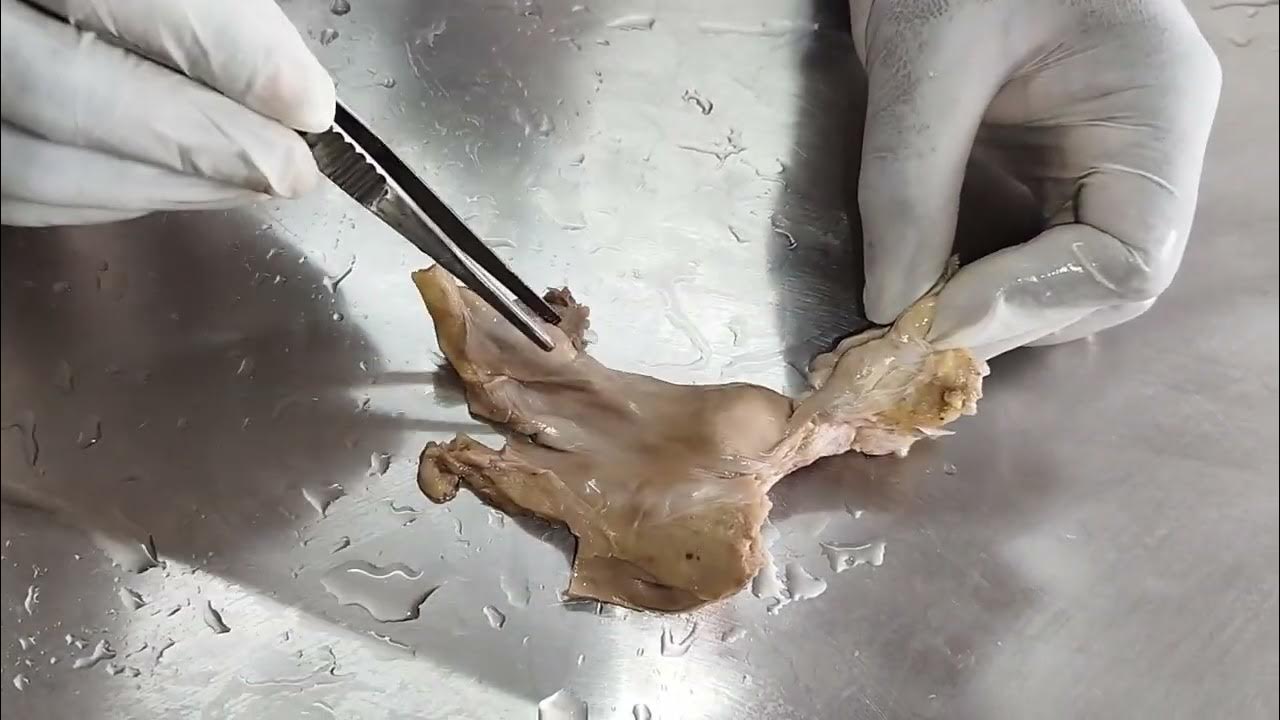Inguinal hernia (embryology, types, clinical features, examination, surgeries) | Surgery SIMPLIFIED
Summary
TLDRThis educational video script offers a comprehensive overview of inguinal hernias, covering their definition, anatomy, types, and clinical examination techniques. It delves into the surgical anatomy of the abdominal wall, explains the differences between direct and indirect inguinal hernias, and outlines various surgical repair methods, including open suture repair, mesh repair, and laparoscopic techniques. The script is designed to aid medical students in understanding and treating inguinal hernias effectively.
Takeaways
- 📚 The video aims to help medical students understand inguinal hernia and prepare for exams by covering essays, Wi-Fi questions, and MCQs.
- 🔍 Inguinal hernia is defined as an abnormal protrusion of a viscus through an opening, which can be natural or artificial, covered by a sac.
- 📐 The anatomy of inguinal hernia includes the sac, contents, and various structures of the anterior abdominal wall, with the sac often being made of layers of the abdominal wall.
- 💡 Surgical anatomy is crucial for understanding inguinal hernia, with layers including the external oblique, internal oblique, transversus abdominis, and transversal fascia.
- 📍 The inguinal canal's boundaries and contents, such as the spermatic cord in males and round ligament of the uterus in females, are important for diagnosis.
- 🔑 The differentiation between direct and indirect inguinal hernias is based on their location relative to the inferior epigastric artery and the deep inguinal ring.
- 🚫 Risk factors for inguinal hernia include old age, smoking, chronic obstructive pulmonary disease, chronic constipation, and urinary difficulties.
- 👨⚕️ Clinical examination of inguinal hernia involves inspection, palpation, percussion, and auscultation, with special tests to identify the type and complications of the hernia.
- 🛑 Complications of inguinal hernia include incarceration (stuck and irreducible hernia), intestinal obstruction, and strangulation, which can lead to severe conditions like sepsis.
- ⚕️ The primary treatment for inguinal hernia is surgery, with various techniques including herniorrhaphy, open suture repair, mesh repair, and laparoscopic repairs.
- 🛠 Surgical principles for inguinal hernia involve reducing the hernial contents, ensuring viability, removing excess sac, and reinforcing the abdominal wall to prevent recurrence.
Q & A
What is an inguinal hernia?
-An inguinal hernia is an abnormal protrusion of a viscus through an opening, which can be natural or artificial, with a sac covering it.
What are the contents of an inguinal hernia?
-The contents of an inguinal hernia can include intestines,omentum, appendix, or even the urinary bladder, among other possible viscera.
What is the significance of the layers of the abdominal wall in understanding inguinal hernias?
-The layers of the abdominal wall are crucial for understanding inguinal hernias as they are involved in the formation of the hernia sac and can be pushed forward by the protruding viscera.
What is the role of the external oblique muscle in the anatomy of an inguinal hernia?
-The external oblique muscle plays a significant role as its aponeurosis forms the inguinal ligament and contributes to the anterior wall of the inguinal canal, with its fibers directed downwards and medially.
Can you explain the concept of the Hesselbach's triangle and its relevance to inguinal hernias?
-Hesselbach's triangle is bounded medially by the lateral border of the rectus abdominis muscle, laterally by the inferior epigastric artery, and inferiorly by the inguinal ligament. Hernias occurring medial to the inferior epigastric artery within this triangle are classified as direct inguinal hernias.
What differentiates a direct inguinal hernia from an indirect inguinal hernia?
-A direct inguinal hernia occurs medial to the inferior epigastric artery within Hesselbach's triangle and is due to weakness in the abdominal wall musculature, while an indirect inguinal hernia occurs lateral to the inferior epigastric artery and follows the path of the deep inguinal ring.
What are some risk factors for developing an inguinal hernia?
-Risk factors for developing an inguinal hernia include old age, smoking, chronic obstructive pulmonary disease (COPD), chronic constipation, and urinary difficulties such as benign prostatic hyperplasia (BPH).
What are the clinical signs to look for during the examination of a patient with an inguinal hernia?
-Clinical signs during examination include the presence of a lump in the groin, skin changes like scars or erythema, cough impulse, the position of the penis, and the reducibility of the hernia.
What is the purpose of the cough impulse test during the clinical examination of an inguinal hernia?
-The cough impulse test helps to identify the presence and expansile nature of a hernia, especially when the hernia is not visible at rest, by observing the swelling during coughing or straining.
What are the surgical principles involved in treating inguinal hernias?
-The surgical principles in treating inguinal hernias include reducing the hernial contents back into the abdominal cavity, ensuring the viability of the reduced contents, removing non-viable tissues, and closing the defect, often with the use of a mesh or sutures to reinforce the abdominal wall.
What are the different types of surgical repairs for inguinal hernias mentioned in the script?
-The different types of surgical repairs for inguinal hernias mentioned include herniated herniorrhaphy, open suture repair (such as Bassini and Shouldice repairs), open mesh repair (like Lichtenstein tension-free repair), the use of hernia plugs, and laparoscopic repairs (TEP and TAPP).
Outlines

This section is available to paid users only. Please upgrade to access this part.
Upgrade NowMindmap

This section is available to paid users only. Please upgrade to access this part.
Upgrade NowKeywords

This section is available to paid users only. Please upgrade to access this part.
Upgrade NowHighlights

This section is available to paid users only. Please upgrade to access this part.
Upgrade NowTranscripts

This section is available to paid users only. Please upgrade to access this part.
Upgrade Now5.0 / 5 (0 votes)





